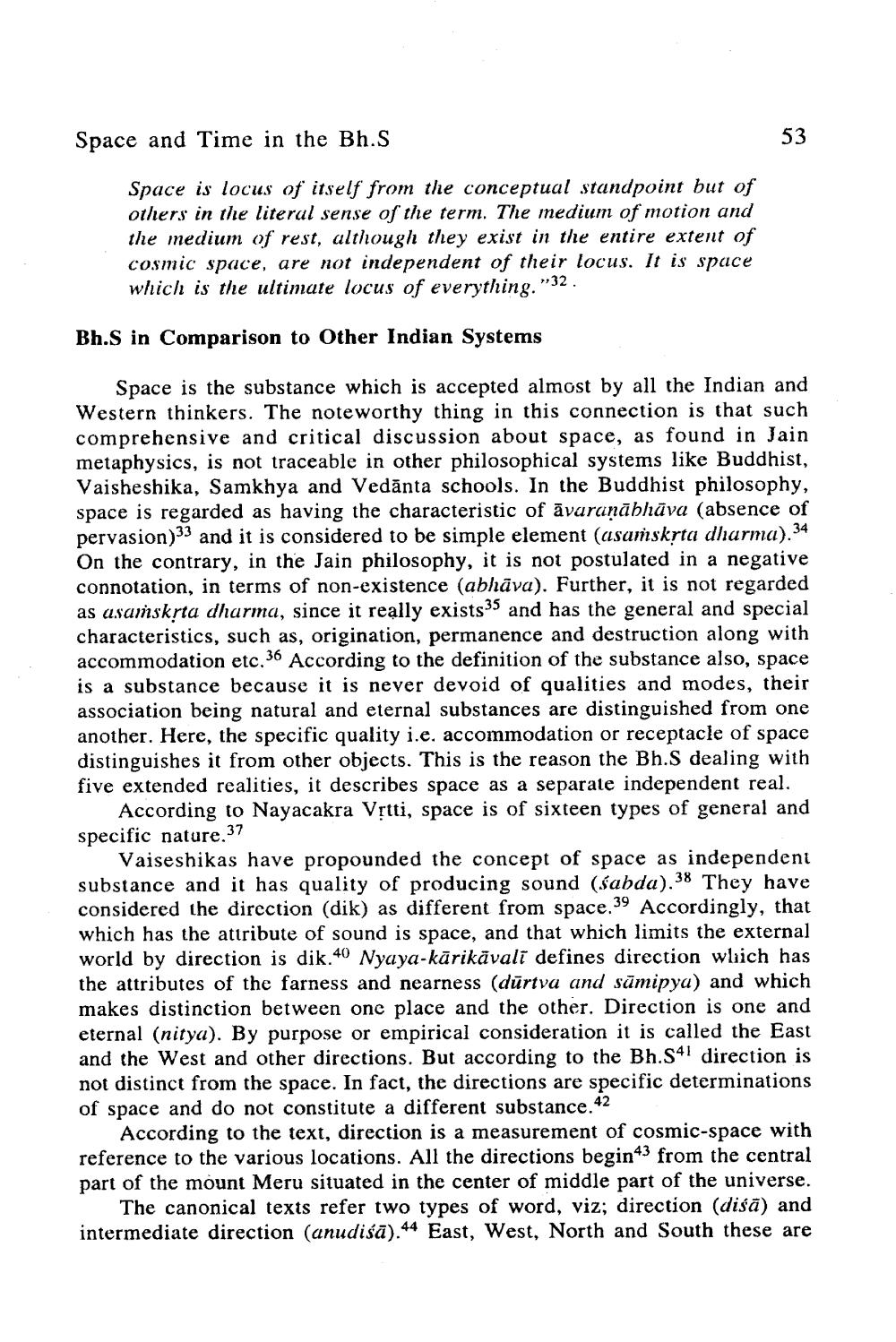________________
Space and Time in the Bh.S
53
Space is locus of itself from the conceptual standpoint but of others in the literal sense of the term. The medium of motion and the medium of rest, although they exist in the entire extent of cosmic space, are not independent of their locus. It is space which is the ultimate locus of everything."32 .
Bh.S in Comparison to Other Indian Systems
Space is the substance which is accepted almost by all the Indian and Western thinkers. The noteworthy thing in this connection is that such comprehensive and critical discussion about space, as found in Jain metaphysics, is not traceable in other philosophical systems like Buddhist, Vaisheshika, Samkhya and Vedānta schools. In the Buddhist philosophy, space is regarded as having the characteristic of avarunābhāva (absence of pervasion)33 and it is considered to be simple element (asaṁskrta dharma).34 On the contrary, in the Jain philosophy, it is not postulated in a negative connotation, in terms of non-existence (abhāva). Further, it is not regarded as asaṁskrta dharma, since it really exists and has the general and special characteristics, such as, origination, permanence and destruction along with accommodation etc.36 According to the definition of the substance also, space is a substance because it is never devoid of qualities and modes, their association being natural and eternal substances are distinguished from one another. Here, the specific quality i.e. accommodation or receptacle of space distinguishes it from other objects. This is the reason the Bh.S dealing with five extended realities, it describes space as a separate independent real.
According to Nayacakra Vrtti, space is of sixteen types of general and specific nature.37
Vaiseshikas have propounded the concept of space as independent substance and it has quality of producing sound (sabda).38 They have considered the direction (dik) as different from space.39 Accordingly, that which has the attribute of sound is space, and that which limits the external world by direction is dik.40 Nyaya-kārikávali defines direction which has the attributes of the farness and nearness (dūrtva and sūmipya) and which makes distinction between one place and the other. Direction is one and eternal (nitya). By purpose or empirical consideration it is called the East and the West and other directions. But according to the Bh.S4l direction is not distinct from the space. In fact, the directions are specific determinations of space and do not constitute a different substance.42
According to the text, direction is a measurement of cosmic-space with reference to the various locations. All the directions begin43 from the central part of the mount Meru situated in the center of middle part of the universe.
The canonical texts refer two types of word, viz; direction (diśā) and intermediate direction (anudiśā).44 East, West, North and South these are




